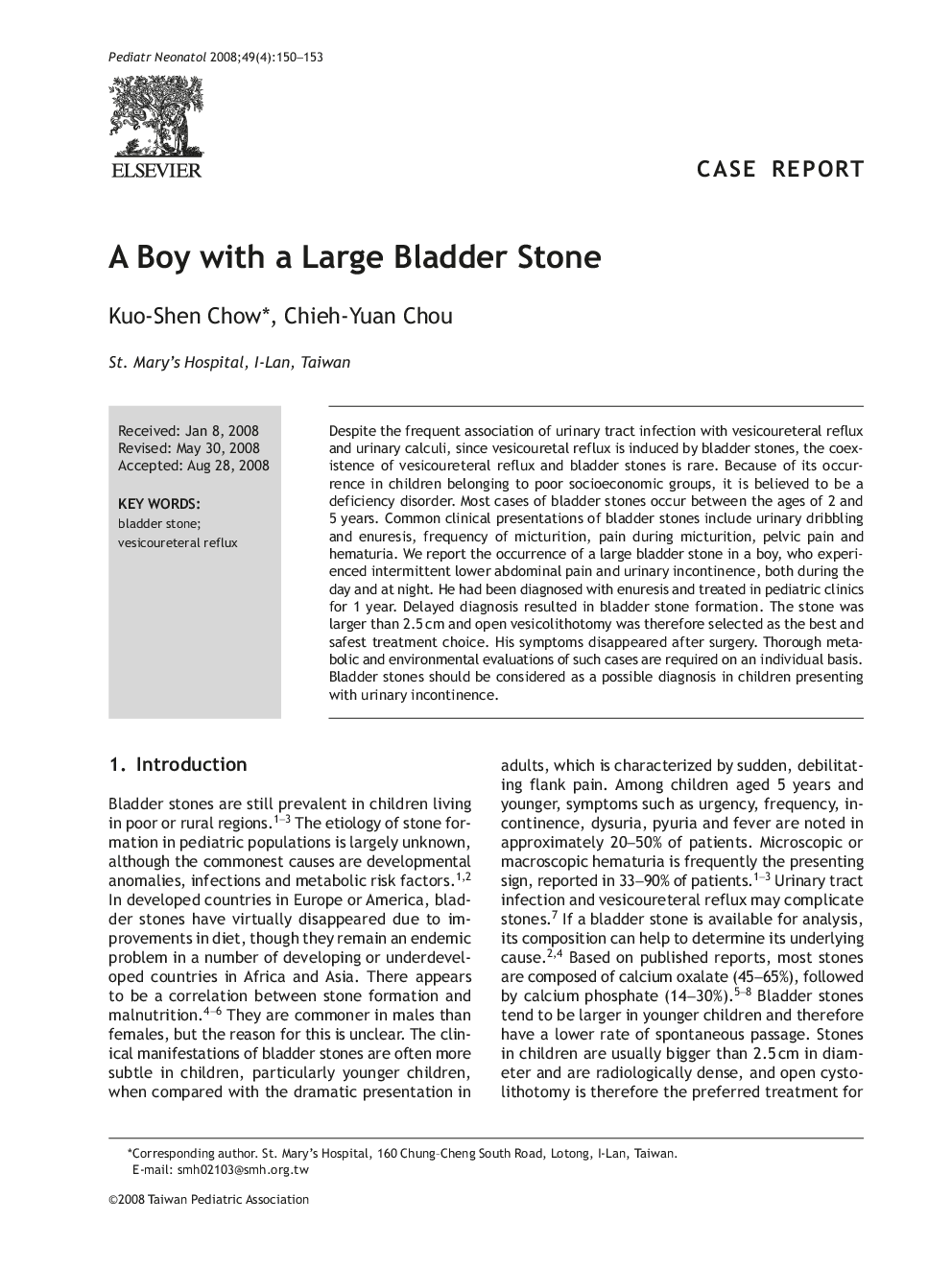| Article ID | Journal | Published Year | Pages | File Type |
|---|---|---|---|---|
| 4175635 | Pediatrics & Neonatology | 2008 | 4 Pages |
Despite the frequent association of urinary tract infection with vesicoureteral reflux and urinary calculi, since vesicouretal reflux is induced by bladder stones, the coexistence of vesicoureteral reflux and bladder stones is rare. Because of its occurrence in children belonging to poor socioeconomic groups, it is believed to be a deficiency disorder. Most cases of bladder stones occur between the ages of 2 and 5 years. Common clinical presentations of bladder stones include urinary dribbling and enuresis, frequency of micturition, pain during micturition, pelvic pain and hematuria. We report the occurrence of a large bladder stone in a boy, who experienced intermittent lower abdominal pain and urinary incontinence, both during the day and at night. He had been diagnosed with enuresis and treated in pediatric clinics for 1 year. Delayed diagnosis resulted in bladder stone formation. The stone was larger than 2.5 cm and open vesicolithotomy was therefore selected as the best and safest treatment choice. His symptoms disappeared after surgery. Thorough metabolic and environmental evaluations of such cases are required on an individual basis. Bladder stones should be considered as a possible diagnosis in children presenting with urinary incontinence.
